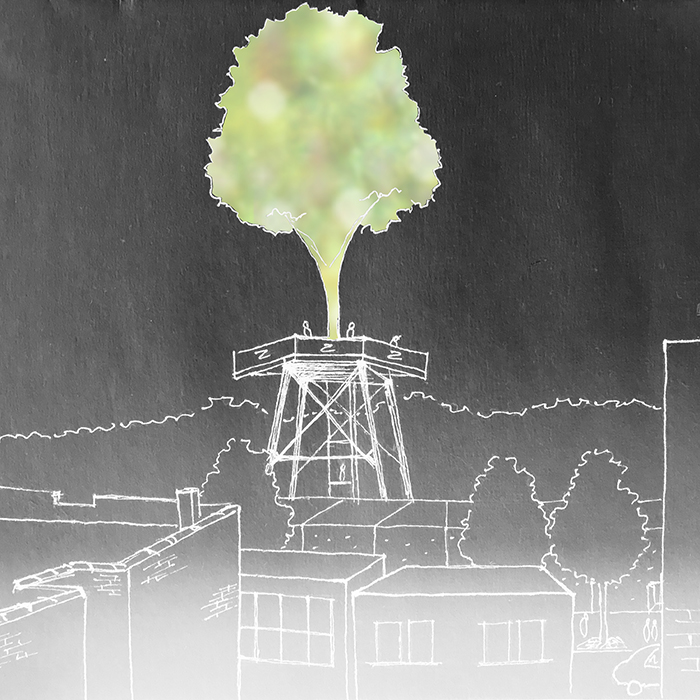By Morgan Harty | July 16, 2019
At the Lakota Group we focus heavily on communication and engagement throughout our design and planning processes. Not only is it our job as landscape architects and urban planners to explore and create innovative solutions, but more importantly, we are charged with educating our clients and communities about best management practices and the value of their economic and environmental benefits.
To do this well, however, we must continually challenge our own notions of value in the landscape and embrace our most obscure and eccentric ideas if we hope to stimulate positive change and placemaking throughout our communities.
Fascination with “remnant” landscapes and ecosystems is not a new phenomenon. See: “The Highline of NYC and the Schulenberg Prairie of The Morton Arboretum.” These highly-curated and managed spaces receive credit and admiration for their resemblance to native environments. But perhaps, this is ultimately a disservice to landscapes. Rather than rewarding designers, engineers, and ecologists for how closely they have recreated nature or wilderness, we should instead acknowledge how they have manufactured entirely new ecosystems.
Emma Marris, author of “Rambunctious Garden,” said, “We know nature when we see it, because we respond to it.” This interpretation frees the definition of “nature” from being bound to words on a page. Instead, it invokes the feelings or emotional responses to the idea of “nature,” resulting in a much more meaningful understanding of the concept.
However, we still tend to measure the value of nature by how closely it represents “pristine wilderness”, often looking to a prehumen baseline for an idea of what kinds of species and ecosystems should reside in any given native landscape. This idea is known as Pleistoscene rewilding.1
Take Oostvaardersplassen for example, a nature reserve in the Netherlands. Ecologist, Frans Vera, created a nature preserve based on historical accounts of what was believed to exist there 13,000 years ago. Naturally, due to species loss, the ecologists had to introduce historical proxies – similar plant and animal species to the ones that had gone extinct – in order to achieve as close a resemblance to their historical baseline as possible.1 What they have actually done is completely fabricated a new ecosystem. Plant and animal species that, historically, never interacted, now coexist and contribute to a healthy ecosystem, all within the confines of 22 square miles. It is an impressive accomplishment and should be recognized for the uniquely curated space that it is. Anyone can trace an image, but it takes true skill and ingenuity to look at image and extract pieces, creating an entirely new composition.
These ecologists identified goals: healthy diverse ecosystems, habitat and climate regulation, and handpicked elements they believed would achieve the desired result. This is a very attractive and strategic design model. We are already experimenting with the techniques of restoration and conservation. Why not expand the boundaries in which we play with these experiments?
Let’s go back to the Highline for a moment. It is very trendy to look to old rail lines as a model for pedestrian thoroughfares. It is a successful model, true, but what would our world look like if we valued a wider variety of abandoned, remnant infrastructure?
An average commute on the Chicago ‘El’ reveals an interesting potential venue for remnant development – an abandoned water tower platform, its hard, black steel fame in stark contrast against a plum colored evening sky. Imagine for a moment if you saw a tree planted atop the structure. The canopy hovering along the horizon line of Chicago’s urban fabric, you might think, “that’s ridiculous”.

But, is it ridiculous? What if we did plant a tree up there? Think of the hanging gardens of Babylon. We have been decorating our buildings and elevated structures with plant material for thousands of years. Green roofs are well known and represented with various implementations throughout the city of Chicago, as well as internationally. They serve to improve energy efficiency in buildings and provide a variety of benefits in urban environments by introducing agriculture or intercepting storm water runoff for reuse. But what to do with remnant structures such as the forsaken water tower platforms? As cousins to abandoned lots, agricultural lands, and remnant stone walls that provide study sites for anthropogenic biomes, perhaps they become the next investigation site for novel ecosystems. These platforms – sky gardens – could provide a framework to establish an entirely new environment.
Not only does the sky garden provide a unique perspective for users to experience their neighborhood in a new way, but atop layers of structural reinforcement, waterproofing membrane and soils, we can experiment with developing an unprecedented modern ecosystem. Fittingly, as the sites of old water towers, they could act as temporary rainwater reservoirs, helping to mitigate flash flooding in the city by intercepting storm water. Other ecosystem services they might provide include improving air quality, providing habitat, and reducing urban heat island effects.
From vacant lots and dilapidated structures to remnant ecosystems, it is our duty to question the seemingly diminished value of these spaces. It is perceived that these fragmented leftover pieces of the environment serve little to no purpose and are often therefore overlooked. What would happen if we highlighted them instead? Perhaps we might find that, with a little effort and creativity, they are in fact invaluable assets to our communities.
The future is a new layer of the urban environment composing a patchwork quilt of greenways, novel ecosystems, sky gardens, and pedestrian thoroughfares. Born out of this investigation is an improved model and methodology of community building – catalyzing economic and environmental development through authentic relationships, cultural exchange, and ideation.
1 Marris, Emma. Rambunctions Garden: Saving Nature in a Post-Wild World. Bloomsbury, 2013.
